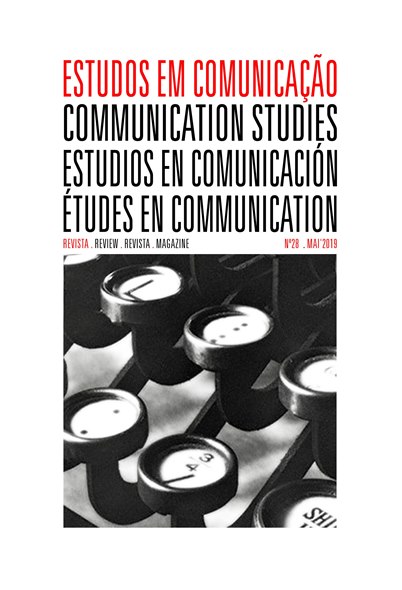Sports Idols in media space: The Kimi Raikkonen Case
Keywords:
Raikkonen, communication, idol, media.Abstract
The construction of sporting idols in a logic of creation of social references comes from immemorial times. Athletes have always been admired for their physical and psychological abilities in the pursuit of victories. In today’s globalized and mediated society, these idols rely on digital communication tools in their relationship with fans, sponsors and the media. This makes the best athletes known all over the world and scrutinized not only for their performance but also for side aspects such as their personality and attitudes. In this work we propose a case study about one of these stars: To know the reasons for the popularity of Formula 1 driver Kimi Raikkonen. Collecting comments from Formula 1 followers in two publications on Youtube and Facebook of the entity that manages Formula 1 and applying a questionnaire to fans of the pilot in a forum of the site Autosport.com, we make a analysis of content in a qualitative logic in which we verify that personality aspects are particularly relevant to the admiration of this pilot.
References
(2018). About Kimi. KimiRäikkönen.com. Consultado em 29 de março de 2018 em www.kimiraik konen.com/about/.
(2017). Kimi Raikkonen’s "cool"birthday gift for Sebastian Vettel. Youtube.com. Consultado em 29 de março de 2018 em: www.Youtube.com/watch?v=I0-uQtTbfP4.
(2017). Kimi Räikkönen - Live Original. Youtube.com. Consultado em 29 de março de 2018 em: www.Youtube.com/watch?v=eiogMwMIWJo.
(2017). F1: Top 10 Team Radio Clips of 2017. Youtube.com. Consultado em 29 de março de 2018 em: www.youtube.com/watch?v=_-D1gIo1aXE&t=90s.
(2015). Full Formula 1 fan survey results revealed. Autosport.com. Consultado em 26 de março de 2918 em: https://www.autosport.com/f1/news/120142/full-f1-fan-survey-results-revealed.
(2017). Michael Schumacher tops F1 Racing’s greatest Ferrari driver poll. Autosport.com. Con- sultado em 26 de março de,2018, em: https://www.autosport.com/f1/news/133054/schumach er-tops-greatest-ferrari-driver-poll.
(2018). Kimi Raikkonen. Formula1com. Consultado em 29 de março de 2018 em: www.formula1. com/en/championship/drivers/kimi-raikkonen/Biography.html.
Amado, J. (2017). Manuel de Investigação qualitativa em educação. Coimbra: Imprensa da Universidade de Coimbra.
Baldwin, A. (2007). Raikkonen questioned about day out as a gorilla. Consultado em 26 de março de 2018 em https://www.reuters.com/article/us-motor-racing-prix-gorilla/raikkonen- questioned-about-day-out-as-a-gorilla-idUSHAR26992720070802.
Bardin, L. (1977). Análise de Conteúdo. Lisboa: Edições 70.
Barlow, J. (2016). Top Gear. Retrieved 26 March, 2018, from /car-news/motorsport/2016s-top- ten-f1-drivers
Barretto, L. (2016). Formula 1 team bosses name Lewis Hamilton 2016’s best driver. Consul- tado em 29 de março de 2018 em: https://www.autosport.com/f1/news/127328/team-bosses- name-hamilton-2016-best-driver.
Barretto, L. (2017). Formula 1 team bosses’ top 10 drivers of 2017 revealed. Consultado em 29 de março de 2018 em: www.autosport.com/f1/news/133472/team-bosses-2017-top-10-f1- drivers-revealed
Bissinger, B. (2012, September 3). Winning. Newsweek, 160, p10.
Boyle, R. & Haynes, R. (2009). Power Play: Sport, the Media and Popular Culture (2nd ed.).
Edinburgh: Edinburgh University Press.
Bradley, C. (2017). The Fans Report. Consultado em 29 de março de 2018 em https://cdn- 3.motorsport.com/static/documents/Fan_Report_Final.pdf.
Coutinho, C. & Chaves, J. (2002). O Estudo de caso na investigação em Tecnologia Educativa em Portugal. Revista Portuguesa de Educação, 15(1): 221-243. Braga: Universidade do Minho. Consultado em 1 de março de 2018 em: http://repositorium.sdum.uminho.pt/bitstream/1822/ 492/1/ClaraCoutinho.pdf
Coutinho, C. (2014). Metodologia da Investigação nas Ciências Sociais e Humanas. Coimbra: Almedina.
Costa, A.; Souza, N. & Souza, D. (2016). Investigação Qualitativa Inovação, Dilemas e Desafios, vol. 1. Aveiro: Ludomedia.
Damon, C. & Holloway, I. (2002). Qualitative Research Methods in Public Relations and Marke- ting Communications. London: Routhledge.
Guerra, I. (2006). Pesquisa qualitativa e análise de conteúdo. Estoril: Principia.
Hamilton, M. (2008). No fuss, just fast. Consultado em 26 de março de 2018 em: www.theguardia n.com/sport/2008/mar/09/motorsports.formulaone2.
Hansen, E. (2006). Successful Qualitative Health Research: A Practical Introduction. Crows Nest, N.S.W.: Allen & Unwin.
Hay-Nicholls, A. (2018). What happened when GQ went ice karting with Kimi Raikkonen. GQ Magazine. Consultado em 26 de março de 2018 em: www.gq-magazine.co.uk/article/kimi- raikkonen-ice-karting.
Holt, S. (2013). The Cult of Kimi Raikkonen, F1’s Coolest driver. Consultado em 26 de março de 2018 em: http://worldsport.blogs.cnn.com/2013/09/12/the-cult-of-kimi-raikkonen-f1s-coole st-driver/.
Lin, Y. & Lin, C. (2007). Impetus for Worship: An Exploratory Study of Adolescents’ Idol Adoration Behaviors. Adolescence, 42: 575.
Lindberg, A. (2013). Kimi Räikkönen Is the Most Interesting Man in Formula 1. Consultado em 29 de março de 2018 em www.caranddriver.com/features/kimi-raikkonen-is-the-most- interesting-man-in-f1-news-im-here-to-do-my-best-page-2.
Parkes, I. (2018). Lewis Hamilton tops F1 team principals’ top 10 drivers of 2015. Consultado em 29 de março de 2018 em www.autosport.com/f1/news/122079/f1-team-principals-top-10- drivers.
Potter, D. (2012). The Victor’s Crown: A History of Ancient Sport from Homer to Byzantium. New York: Oxford University Press.
Pronschinske, M.; Groza, M. D., & Walker, M. (2012). Attracting Facebook ’Fans’: The Im- portance of Authenticity and Engagement as a Social Networking Strategy for Professional Sport Teams. Sport Marketing Quarterly, 21: 221.
Routhledge, P. (2015, August 28). Pampered Idols and Empty Lives. The Mirror. London, En- gland.
Rowe, D. (2004). Critical Readings: Sport, Culture and the Media. Maidenhead, England: Open University Press.
Scott, D. (2008). As novas Regras de Marketing e Relações Públicas. Porto: Porto Editora. Teitelbaum, S. H. (2005). Sports Heroes, Fallen Idols. Lincoln, NE: University of Nebraska Press. Teixeira, P. (2012). O Regresso de Kimi Raikkonen. Consultado em 5 de abril de 2018 em: http://continental-circus.blogspot.com/2012/01/formula-1-em-cartoons-o-regresso-de.html.
Whannel, G. (2002). Media Sport Stars: Masculinities and Moralities. London: Routledge.
Downloads
Published
Issue
Section
License
Estudos em Comunicação/Communication Studies is an Open Access journal. All its content is freely available without charge to the user or his institution. Users are allowed to read, download, copy, distribute, print, search, or link to the full texts of the articles in this journal without asking prior permission from the publisher or the author. Estudos em Comunicação, by Labcom, is licensed under a Creative Commons Atribuição-NãoComercial-SemDerivações 3.0 Unported License. By submitting your work to Estudos em Comunicação/Communication studies you confirm you are the author and own the copyright, that the content is original and previously unpublished, and that you agree to the licensing terms.


